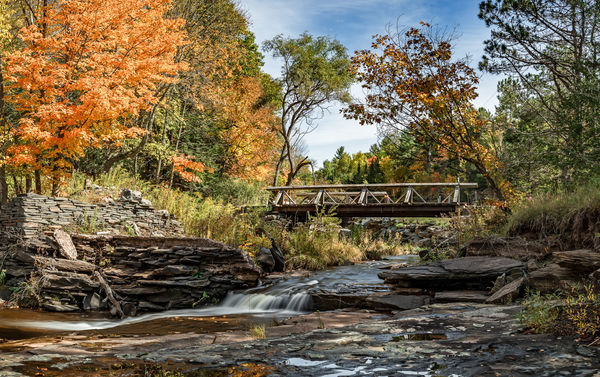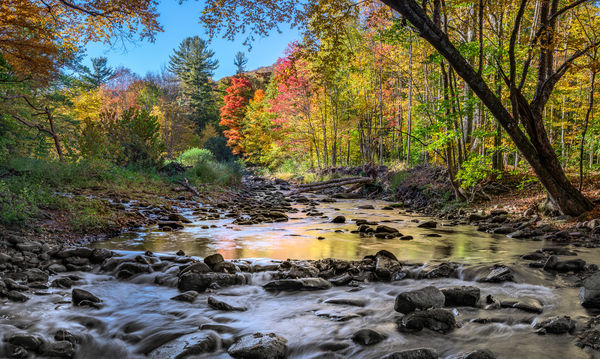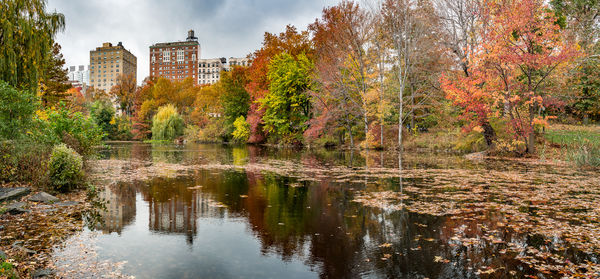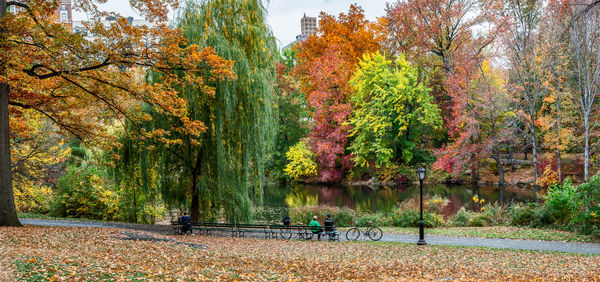Landscape Lens
Mar 13, 2017 21:05:29 #
Last week I started a thread on this subject trying to get views on which lens is best (referring to MM) if you only carried one prime lens for landscape. I have some ultra wide and some zooms, but was thinking of investing in one really good wide lens for landscape and night sky shots. I received a lot of good input about zooms, and ultra wides, but we never got to the point of my question (which maybe I did not make clear enough). I have been shooting Nikon for 10 years since I retired, and last year started shooting Sony A7 series due to a bad injury and transport issues. My strategy is to get a lens for Nikon D810 and to also use it with adapter on the A7.
I have the Zeiss Distaton T 15mm, but in a lot of cases it is so wide it is difficult to compose and expose properly. I am thinking a 28mm would be a good solution. Zeiss has the Classic Distagon, Milvus and Otus lines for Nikon. (I have some of the Batis and Loxia lenses for my Sony A7 in E format.) My question would be if anyone thinks the Mil's and/or Otus lines are worth the cost. I have read that some of these lenses have Coma issues.
I have read a lot of reviews but a lot of the tech analysis is beyond my ability. Since I started as a beginner, and acquired a lot of equipment slowly over the years, and kept improving quality, I now wish I had just bought the best from the beginning. I am planning to start selling all my "b" quality stuff and to only keep the stuff that is really good. For reference, yes, I am an amateur, but good enough to have been published quite a few times. Not making any money.
I have the Zeiss Distaton T 15mm, but in a lot of cases it is so wide it is difficult to compose and expose properly. I am thinking a 28mm would be a good solution. Zeiss has the Classic Distagon, Milvus and Otus lines for Nikon. (I have some of the Batis and Loxia lenses for my Sony A7 in E format.) My question would be if anyone thinks the Mil's and/or Otus lines are worth the cost. I have read that some of these lenses have Coma issues.
I have read a lot of reviews but a lot of the tech analysis is beyond my ability. Since I started as a beginner, and acquired a lot of equipment slowly over the years, and kept improving quality, I now wish I had just bought the best from the beginning. I am planning to start selling all my "b" quality stuff and to only keep the stuff that is really good. For reference, yes, I am an amateur, but good enough to have been published quite a few times. Not making any money.
Mar 13, 2017 21:13:02 #
John Howard wrote:
Last week I started a thread on this subject tryin... (show quote)
I have one lens, a prime, that I use for landscape/seascape. The Nikon AF Nikkor 24mm f/2.8D
Mar 13, 2017 21:13:46 #
John Howard wrote:
Last week I started a thread on this subject tryin... (show quote)
I use a 45mm PC-E 90% of the time for landscape. I have an excellent 14-24 F2.8 zoom, but even though I carry it, I rarely use it. Ultra wide lenses are very specialized, and they offer uncorrectable extension distortion, and somewhat correctable volume anamorphosis. Check DXO Viewpoint for a video explaining what VA is and how they correct for it. Read up on extension distortion.
A 45mm - 60mm lens will mimick the eye's perception and will be relatively free of those distortions. If you need a wider view, do as the master landscape painters used to do - turn their heads to get wider - in this case you would create a stitched panorama, with the camera in portrait mode. You'll find that many experienced landscape guys do panos, and many use the tilt shift lenses. One great advantage of the pano approach is that you have a lot more pixels to work with, so image quality is very high.
Mar 13, 2017 21:26:42 #
Thanks. I guess you are saying even the 28mm is wider than I need if I only want to carry one prime lens. I do do panos, but have been using a 25 or 35mm lens in portrait. The question then is Nikon, Sigma Art or Zeiss.
Mar 13, 2017 21:28:45 #
I wonder how many answers will change since two weeks ago. Gene still uses his 45mm PC most of the time.
--
--
Mar 13, 2017 21:46:15 #
Mar 13, 2017 21:53:13 #
Sigma 24 mm f/1.4 Art is what I use for wide angle landscapes and nightime shots.
https://fstoppers.com/originals/hands-review-sigmas-newest-24mm-f14-art-beauty-69618
https://fstoppers.com/originals/hands-review-sigmas-newest-24mm-f14-art-beauty-69618
Mar 13, 2017 21:56:46 #
Before I switched to M4/3 system my favourite landscape lens on my D800E and D750 was the Nikon 24mm PC-E lens. Besides the tilt feature, which enables you to extend your depth of field without risking diffraction at teeny weeny aperture settings, and the shift feature which enables you to get the tops of the trees into the image without keystoning, the lens is an incredibly sharp machine when used as a straight lens. This probably comes from the design of the lens which projects a much larger circle of light to accommodate the tilting and shifting. When used as a straight lens only the central part of the lens is actually used. It is a manual focus lens but you should be on a tripod anyway if you are serious about landscape photography.
Mar 13, 2017 22:24:11 #
Gene51 wrote:
I use a 45mm PC-E 90% of the time for landscape. I... (show quote)
Now when I use my 14-24, I'll be thinking about a 45mm PC.
Mar 13, 2017 22:54:55 #
DavidPine
Loc: Fredericksburg, TX
Either a 24mm or 19mm tilt-shift without a doubt.
John Howard wrote:
Last week I started a thread on this subject tryin... (show quote)
Mar 14, 2017 06:23:32 #
Wanderer2
Loc: Colorado Rocky Mountains
Perhaps it is stating the obvious but it seems to me it is impossible to say what type of lens is best for "landscapes" as different types of landscapes may require very different focal length lenses. Two of the places I shoot most are the red rock country of southern Utah and the much more wide open country of the northern Rocky Mountains. The former often requires wide angles or even ultra wide angles at times, the latter often requires telephotos. Other locations may often require either, the islands of Puget Sound and open desert scenes for example.
The question of what lens or lenses are best for landscapes is frequently asked on this and other forums. Without knowing what sort of landscapes the OP will be shooting it is impossible to provide a good answer IMHO.
The question of what lens or lenses are best for landscapes is frequently asked on this and other forums. Without knowing what sort of landscapes the OP will be shooting it is impossible to provide a good answer IMHO.
Mar 14, 2017 06:25:11 #
About a year ago I purchased a Lumix Summilux 4/3 (not micro 4/3) f 1.4 25 mm that gives the equivalent of 50 mm on Olympus 4/3. It meets all of my needs for landscape, produces no distortion, and is fantastic at night both indoors and out. The equivalent of 50 mm gives a good field of view that is not distorted as happens at the 12 mm end of a 12-60. If you take night time or low-light landscapes f 1.4 is tremendous. No need for a tripod except under the dimmest of conditions.
Mar 14, 2017 06:26:28 #
I use my standard 50mm lens for most of my landscapes. The lens yields about what is seen with the human eye. If I had to take one lens on a trip it would be the 90mm macro lens which can also be used as a small telephoto.
Mar 14, 2017 07:07:12 #
I am in almost the same boat as you. I have been using a Panasonic Lumix for years and recently purchased the Sony A7. I was convinced that, rather than go any other way, I should purchase a good piece of glass for the Sony. I was able to secure a barely used Sony 16-35mm lens and could not be happier. I urge you to consider this choice.
Mar 14, 2017 07:37:00 #
Teton Viewer wrote:
Perhaps it is stating the obvious but it seems to ... (show quote)
With full frame I have used everything from 14mm to 600mm for landscapes - so I can totally agree. However, my 45mm is my go to for most of my landscape work.
Here are some examples made with 3 to 5 shot pano stitches using the 45mm, except for the last which was done with an 85m - all taken with a D800.
If you want to reply, then register here. Registration is free and your account is created instantly, so you can post right away.











